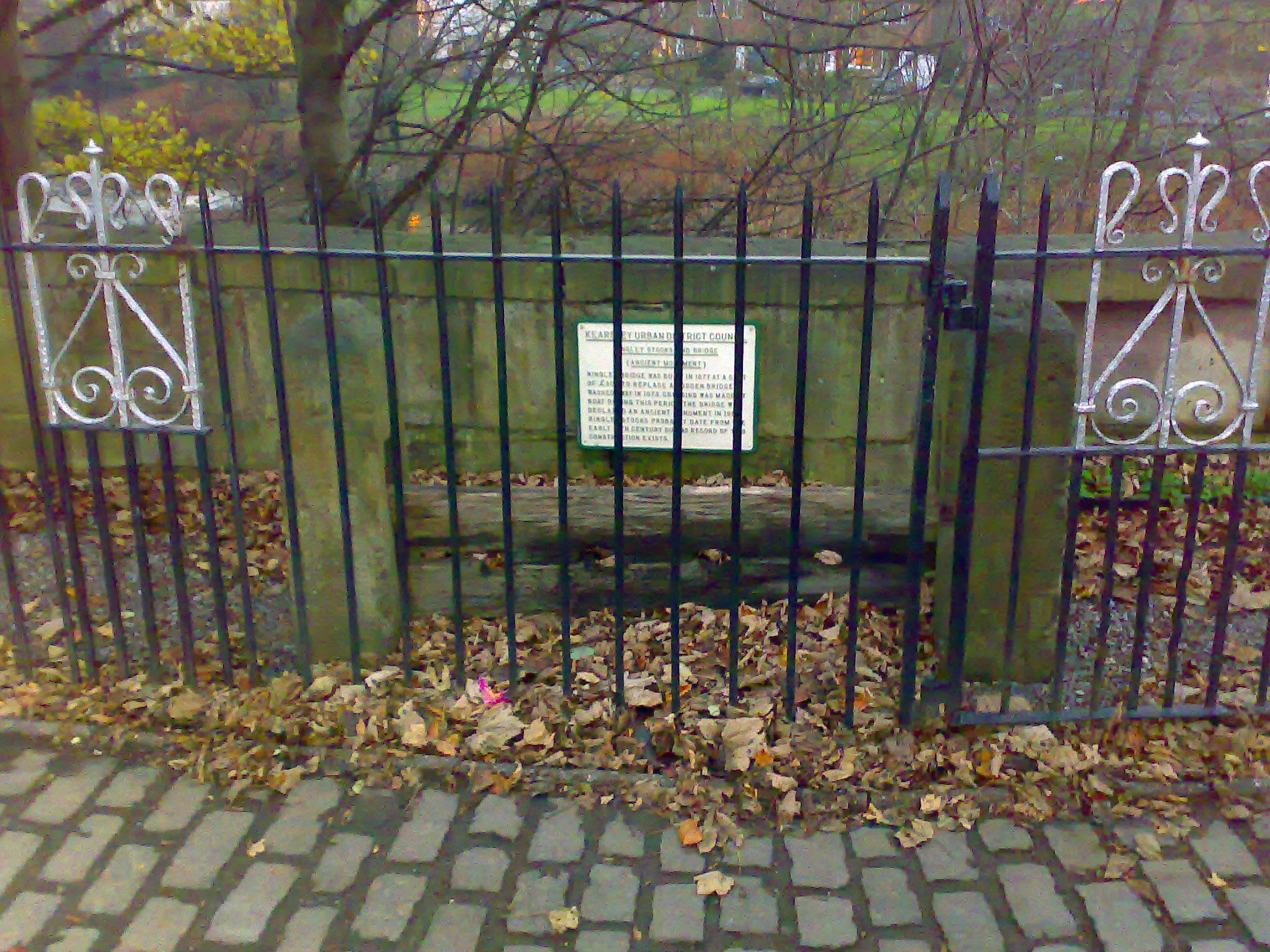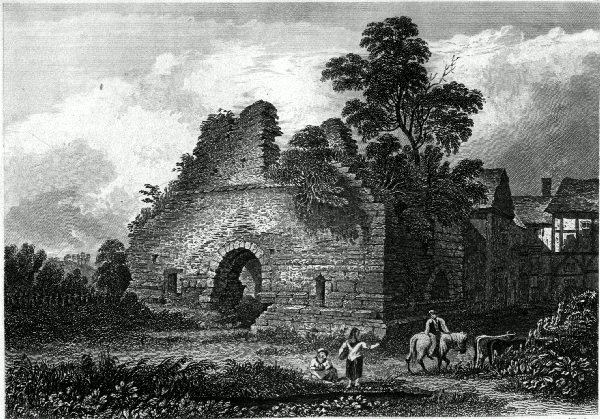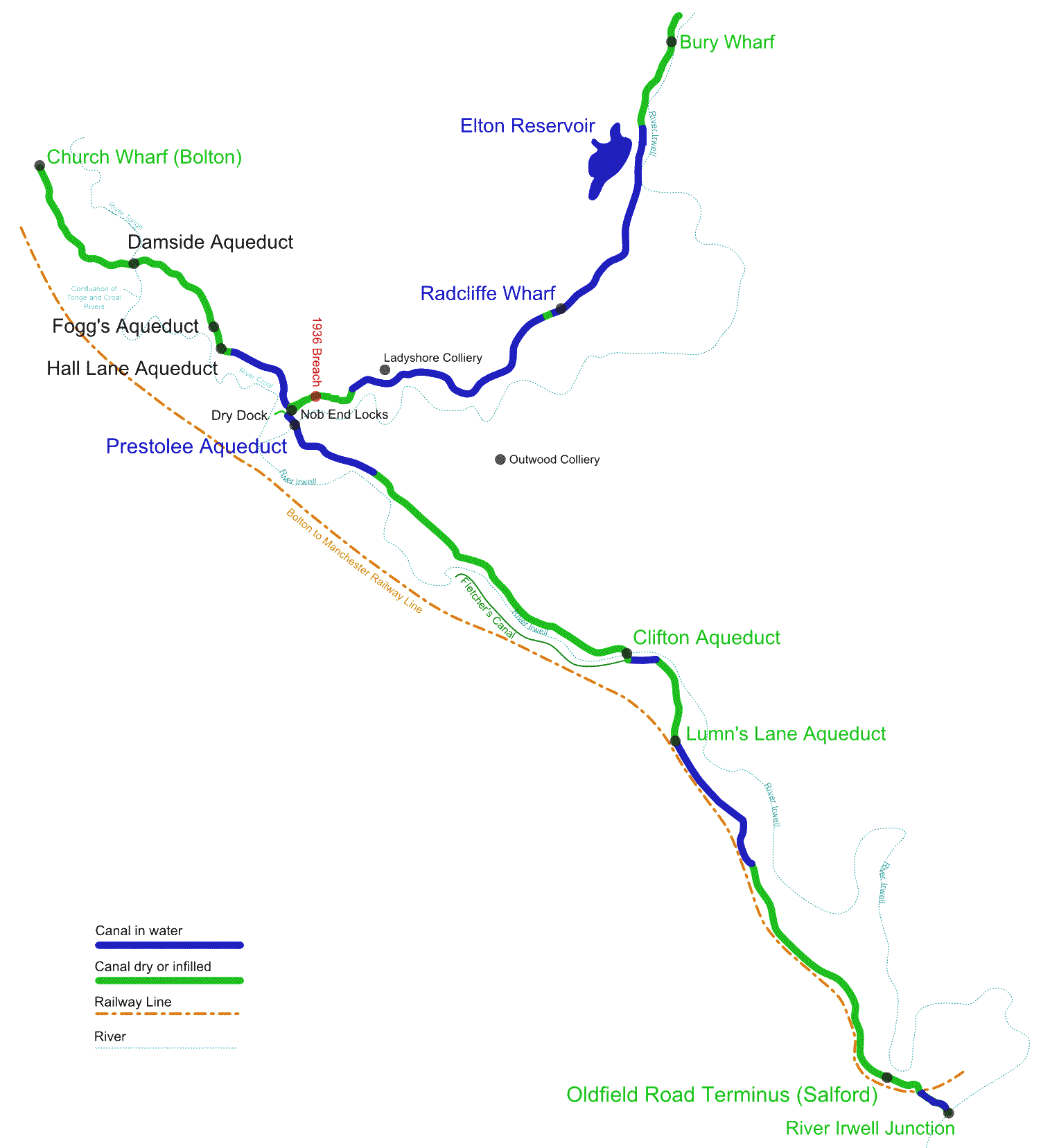|
Outwood Colliery
Outwood Colliery was a coal mine in Outwood, near Stoneclough in the historic county of Lancashire, England. Originally named Clough Side Colliery, it opened in the 1840s and was the largest colliery in the area. It was owned by Thomas Fletcher & Sons, Outwood Collieries, Stoneclough, Manchester. There were two pits. Coal was transported by a tramway to a depot west of Outwood Road, in Radcliffe, and also by tramway through Ringley Wood to the nearby Manchester, Bolton and Bury Canal. A railway sidings from the nearby East Lancashire Railway Line was located nearby, from the northern end of the colliery. In its heyday the colliery employed over 2000 workers. Outwood Colliery exploited the coal seams of the Manchester Coalfield and was noted for its ''Trencherbone Coal''. Due to an underground fire which caused the winding gear to collapse into its own shaft, the colliery was closed in 1931. __NOTOC__ Regeneration The colliery site, which covers , was transferred from the ... [...More Info...] [...Related Items...] OR: [Wikipedia] [Google] [Baidu] |
Coal Mine
Coal mining is the process of extracting coal from the ground. Coal is valued for its energy content and since the 1880s has been widely used to generate electricity. Steel and cement industries use coal as a fuel for extraction of iron from iron ore and for cement production. In the United Kingdom and South Africa, a coal mine and its structures are a colliery, a coal mine is called a 'pit', and the above-ground structures are a 'pit head'. In Australia, "colliery" generally refers to an underground coal mine. Coal mining has had many developments in recent years, from the early days of men tunneling, digging and manually extracting the coal on carts to large open-cut and longwall mines. Mining at this scale requires the use of draglines, trucks, conveyors, hydraulic jacks and shearers. The coal mining industry has a long history of significant negative environmental impacts on local ecosystems, health impacts on local communities and workers, and contributes heavily to th ... [...More Info...] [...Related Items...] OR: [Wikipedia] [Google] [Baidu] |
Outwood, Greater Manchester
Outwood is a settlement and was, from 1894 to 1933, a civil parish in the Bury Rural District in the administrative county of Lancashire, England. History Outwood was an area in the township of Pilkington in the ancient parish of Prestwich-cum-Oldham in the historic county of Lancashire. It was once called Outwood of Pilkington and is marked as Outwoods on the Yates Map of 1787 and on the later Greenwood and Hennet maps. Under the Local Government Act 1894, Outwood was established as a civil parish and became part of the Bury Rural District in the administrative county of Lancashire, England. In 1933, Outwood civil parish was abolished and its former area was divided between Kearsley Kearsley ( ) is a town in the Metropolitan Borough of Bolton, Greater Manchester, England. The population at the 2011 census was 14,212. Historically part of Lancashire, it lies northwest of Manchester, southwest of Bury and south of ..., Radcliffe and Whitefield urban districts ... [...More Info...] [...Related Items...] OR: [Wikipedia] [Google] [Baidu] |
Stoneclough
Stoneclough is a suburban area of Kearsley in the Metropolitan Borough of Bolton, Greater Manchester, England. It is located south-east of Bolton, south-west of Bury and north-west of Manchester. It is located on the banks of the River Irwell to the southeast of Bolton. Historically part of Lancashire, there are a number of listed buildings and recognised ancient monuments in the villages including Ringley Old Bridge, the village stocks, Kearsley Mill, St Saviour's Church and clock tower and the large stone railway bridge on the Manchester to Bolton railway line. The disused Manchester, Bolton and Bury Canal also passes through this area. Stoneclough is mostly residential, housing has replaced most of the old industry. These industrial sites included the Kearsley Paper Works owned by Robert Fletcher and Sons and Kearsley Power Station located on Hulme Road. These have been demolished. Toponymy The Stoneclough means stony ravine from the Old English words ''stan'' me ... [...More Info...] [...Related Items...] OR: [Wikipedia] [Google] [Baidu] |
Historic Counties Of England
The historic counties of England are areas that were established for administration by the Normans, in many cases based on earlier Heptarchy, kingdoms and shires created by the Angles, Saxons, Jutes, Celts and others. They are alternatively known as ancient counties, traditional counties, former counties or simply as counties. In the centuries that followed their establishment, as well as their administrative function, the counties also helped define local culture and identity. This role continued even after the counties ceased to be used for administration after the creation of Administrative counties of England, administrative counties in 1889, which were themselves amended by further local government reforms in the years following. Unlike the partly self-governing Ancient borough, boroughs that covered urban areas, the counties of medieval England existed primarily as a means of enforcing central government power, enabling monarchs to exercise control over local areas throug ... [...More Info...] [...Related Items...] OR: [Wikipedia] [Google] [Baidu] |
Lancashire
Lancashire ( , ; abbreviated Lancs) is the name of a historic county, ceremonial county, and non-metropolitan county in North West England. The boundaries of these three areas differ significantly. The non-metropolitan county of Lancashire was created by the Local Government Act 1972. It is administered by Lancashire County Council, based in Preston, and twelve district councils. Although Lancaster is still considered the county town, Preston is the administrative centre of the non-metropolitan county. The ceremonial county has the same boundaries except that it also includes Blackpool and Blackburn with Darwen, which are unitary authorities. The historic county of Lancashire is larger and includes the cities of Manchester and Liverpool as well as the Furness and Cartmel peninsulas, but excludes Bowland area of the West Riding of Yorkshire transferred to the non-metropolitan county in 1974 History Before the county During Roman times the area was part of the Bri ... [...More Info...] [...Related Items...] OR: [Wikipedia] [Google] [Baidu] |
Radcliffe, Greater Manchester
Radcliffe is a market town in the Metropolitan Borough of Bury, Greater Manchester, England. It lies in the Irwell Valley north-northwest of Manchester and south-west of Bury and is contiguous with Whitefield to the south. The disused Manchester Bolton & Bury Canal bisects the town. Evidence of Mesolithic, Roman and Norman activity has been found in Radcliffe and its surroundings. A Roman road passes through the area, along the border between Radcliffe and Bury. Radcliffe appears in an entry of the Domesday Book as "Radeclive" and in the High Middle Ages formed a small parish and township centred on the Church of St Mary and the manorial Radcliffe Tower, both of which are Grade I listed buildings. Plentiful coal in the area facilitated the Industrial Revolution, providing fuel for the cotton spinning and papermaking industries. By the mid-19th century, Radcliffe was an important mill town with cotton mills, bleachworks and a road, canal and railway network. At the ... [...More Info...] [...Related Items...] OR: [Wikipedia] [Google] [Baidu] |
Manchester, Bolton And Bury Canal
The Manchester Bolton & Bury Canal is a disused canal in Greater Manchester, England, built to link Bolton and Bury with Manchester. The canal, when fully opened, was long. It was accessed via a junction with the River Irwell in Salford. Seventeen locks were required to climb to the summit as it passed through Pendleton, heading northwest to Prestolee before it split northwest to Bolton and northeast to Bury. Between Bolton and Bury the canal was level and required no locks. Six aqueducts were built to allow the canal to cross the rivers Irwell and Tonge and several minor roads. The canal was commissioned in 1791 by local landowners and businessmen and built between 1791 and 1808, during the Golden Age of canal building, at a cost of £127,700 (£ today). Originally designed for narrow gauge boats, during its construction the canal was altered into a broad gauge canal to allow an ultimately unrealised connection with the Leeds and Liverpool Canal. The canal company l ... [...More Info...] [...Related Items...] OR: [Wikipedia] [Google] [Baidu] |
Manchester Coalfield
The Manchester Coalfield is part of the South Lancashire Coalfield, the coal seams of which were laid down in the Carboniferous Period. Some easily accessible seams were worked on a small scale from the Middle Ages, and extensively from the beginning of the Industrial Revolution in the early 19th century until the last quarter of the 20th century. The Coal Measures lie above a bed of Millstone Grit and are interspersed with sandstones, mudstones, shales, and fireclays. The Lower Coal Measures occupy the high ground of the West Pennine Moors above Bolton and are not worked in the Manchester Coalfield. The most productive of the coal measures are the lower two thirds of the Middle Coal Measures where coal is mined from seams between the Worsley Four Foot and Arley mines. The deepest and most productive collieries were to the south of the coalfield. The coalfield is affected by the northwest to southeast aligned Pendleton Fault along the Irwell Valley and the Rossendale Valley an ... [...More Info...] [...Related Items...] OR: [Wikipedia] [Google] [Baidu] |
Irwell Sculpture Trail
The Irwell Sculpture Trail is the largest public art scheme in England, commissioning regional, national and international artists. The Trail includes 28 art pieces and follows a well established footpath stretching from Salford Quays through Bury into Rossendale and up to the Pennines above Bacup. Chapel Street to Peel Park The Fabric of Nature Viewed from above this earthwork is loosely in the shape of a bud and leaf unfurling into a double spiral mound taking the viewer up to a curved brick seating area. A series of leaf images and patterns are set into the brick path to help people discover the park. The sculpture is an attempt to move between the formal Victorian design of the park seen in the remnants of the formal bedding and local buildings, and the geometric patterns of natural forms discovered on closer inspection i.e. the double helix of the centre of a daisy. The design incorporates many requests arising out of a consultation process e.g. seating, colour a ... [...More Info...] [...Related Items...] OR: [Wikipedia] [Google] [Baidu] |
Irwell Valley
The Irwell Valley in North West England extends from the Forest of Rossendale through the cities of Salford and Manchester. The River Irwell runs through the valley, along with the River Croal. Geology Shallow seas covered most of south-east Lancashire in the Upper Carboniferous period when deposits of mud and sand were laid down. These later became beds of shales and sandstones alternating with layers of gritstone. There are also beds of New Red Sandstone and Manchester Marls. The glaciers of the Pleistocene epoch further shaped the landscape and then retreated, leaving behind deposits of sand, pebbles and boulder clay that formed the fluvioglacial ridges of the Irwell Valley. Ashclough, a 5.8 hectare (14.3 acre) site which comprises the steep banks of the river between Prestolee and Little Lever, has been designated a Site of Special Scientific Interest (SSSI) because of its geological interest, primarily because it is the best site in the area displaying Ashcough Marine Ba ... [...More Info...] [...Related Items...] OR: [Wikipedia] [Google] [Baidu] |
Collieries In The Lancashire Coalfield
Coal mining is the process of extracting coal from the ground. Coal is valued for its energy content and since the 1880s has been widely used to generate electricity. Steel and cement industries use coal as a fuel for extraction of iron from iron ore and for cement production. In the United Kingdom and South Africa, a coal mine and its structures are a colliery, a coal mine is called a 'pit', and the above-ground structures are a 'pit head'. In Australia, "colliery" generally refers to an underground coal mine. Coal mining has had many developments in recent years, from the early days of men tunneling, digging and manually extracting the coal on carts to large open-cut and longwall mines. Mining at this scale requires the use of draglines, trucks, conveyors, hydraulic jacks and shearers. The coal mining industry has a long history of significant negative environmental impacts on local ecosystems, health impacts on local communities and workers, and contributes heavily to ... [...More Info...] [...Related Items...] OR: [Wikipedia] [Google] [Baidu] |
Coal Mines In Lancashire
Coal is a combustible black or brownish-black sedimentary rock, formed as rock strata called coal seams. Coal is mostly carbon with variable amounts of other elements, chiefly hydrogen, sulfur, oxygen, and nitrogen. Coal is formed when dead plant matter decays into peat and is converted into coal by the heat and pressure of deep burial over millions of years. Vast deposits of coal originate in former wetlands called coal forests that covered much of the Earth's tropical land areas during the late Carboniferous ( Pennsylvanian) and Permian times. Many significant coal deposits are younger than this and originate from the Mesozoic and Cenozoic eras. Coal is used primarily as a fuel. While coal has been known and used for thousands of years, its usage was limited until the Industrial Revolution. With the invention of the steam engine, coal consumption increased. In 2020, coal supplied about a quarter of the world's primary energy and over a third of its electricity. Some iron a ... [...More Info...] [...Related Items...] OR: [Wikipedia] [Google] [Baidu] |







